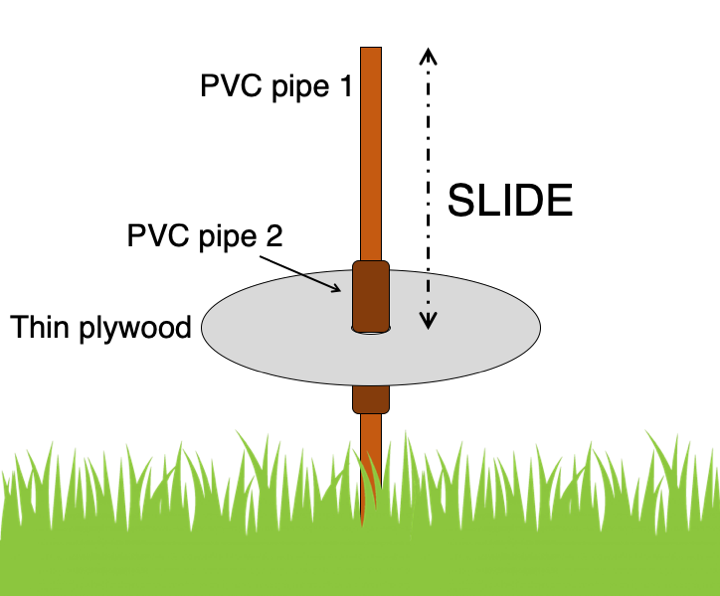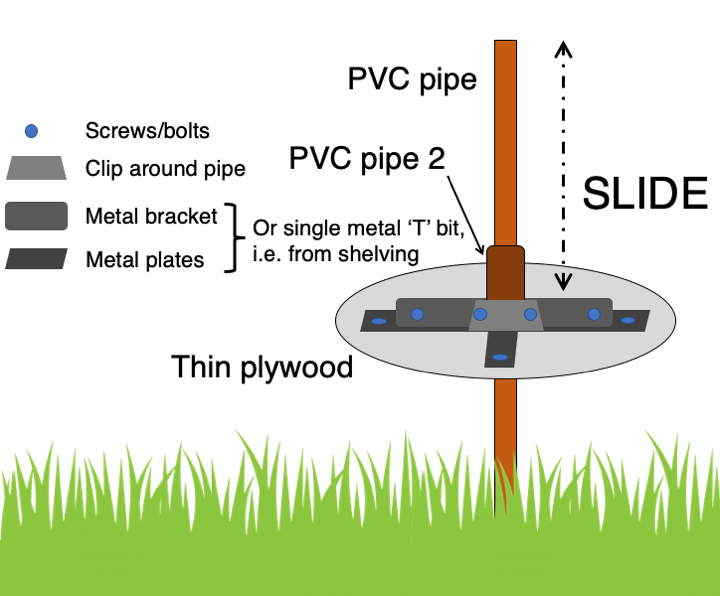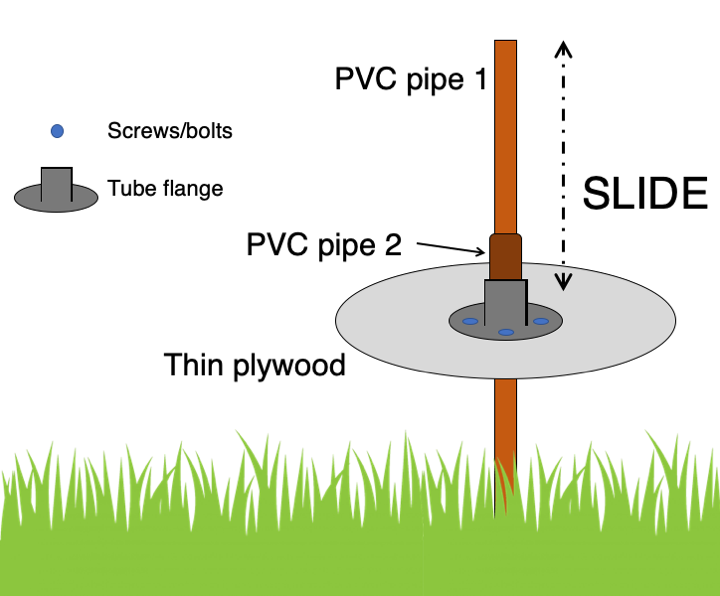TITLE: DIY disc pasture meter
DATE: 2019-02-05
AUTHOR: John L. Godlee
====================================================================
Disc pasture meters are used as a method of rapidly assessing grass
biomass in grasslands. They're used a lot in rangeland ecology and
agriculture, but they're also useful for my work. They operate very
simply by dropping a plate of a known mass and area onto a patch of
grass and recording the height at which it settles. They require
calibrating by clipping the grass below a proportion of the disc
measurements, drying it and then weighing the dry material to build
an allometric equation.
The basic design looks like this:

I want to use a disc pasture meter in Angola when I go on fieldwork
next month, but I don't want to have to take loads of bits of pipe
and a big disc in my luggage, which is already ridiculously bulky.
So instead, I am trying to design a meter that sources as much of
the instrument as possible from easy to find materials in Angola. I
have spent a lot of time surfing around on hardware websites and
measuring bits of pipe. The most dificult aspect of the design is
attaching the free-moving sleeve pipe to the plywood disc. I've
come up with a couple of designs.
The first design uses a section of flat aliuminium in an inverted-T
shape which are bolted onto the top of the plywood sheet, then the
sleeve is attached to the T section with a grounding clamp used for
pipes and electrical wires. This design is good because it
reinforces the potentially quite flimsy plywood sheet. I would take
the bolts, metal t-section, grounding clamp and the outer sleeve
pipe to Angola, and buy the rest of the piping and the plywood
sheet while I was there.

This second design doesn't distribute the weight as well, but
requires fewer bolts (meaning fewer drill holes) and fewer bits of
metal to take in luggage. It uses a base flange normally used to
attach a water pipe to a tank. Again, I would buy the flange, the
bolts and the outer sleeve in the UK, then get the rest in Angola.

The flange design could potentially be made more sturdy by
sandwiching some flat pieces of reinforcing aluminium to the flange
and then going out radially in a cross shape to the edge of the
plywood disc.
I looked at a number of research papers which used disc pasture
meters to see what dimensions and materials they used. I came
across this brilliant website which gave me the inspiration for the
T-section design. The papers I looked at were:
[this brilliant website]:
http://phytosphere.com/gear/fallingplatemeter.html
D.I. Bransby & N.M. Tainton (1977) The disc pasture meter :
Possible applications in grazing management, Proceedings of the
Annual Congresses of the Grassland Society of Southern Africa,
12:1, 115-118, DOI: 10.1080/00725560.1977.9648818
Dörgeloh, W. G. (2002), Calibrating a disc pasture meter to
estimate above‐ground standing biomass in Mixed Bushveld, South
Africa. African Journal of Ecology, 40: 100-102.
doi:10.1046/j.0141-6707.2001.00338.x
B. Hardy & M.T. Mentis (1985) The relative efficiency of three
methods of estimating herbage mass in veld, Journal of the
Grassland Society of Southern Africa, 2:1, 35-38, DOI:
10.1080/02566702.1985.9647996
N Zambatis, PJK Zacharias, CD Morris & JF Derry (2006)
Re-evaluation of the disc pasture meter calibration for the Kruger
National Park, South Africa, African Journal of Range & Forage
Science, 23:2, 85-97, DOI: 10.2989/10220110609485891
ost of these papers used Bransby and Tainton's (1977) design, which
suggested the following dimensions:
- Long rod length: 180 cm
- Long rod external diameter: 22 mm
- Sleeve pipe length: 120 cm
- Sleeve pipe external diameter: 27 mm
- Disc diameter: 45.8 cm (18")
- Total weight of free-moving parts: 1.5 kg